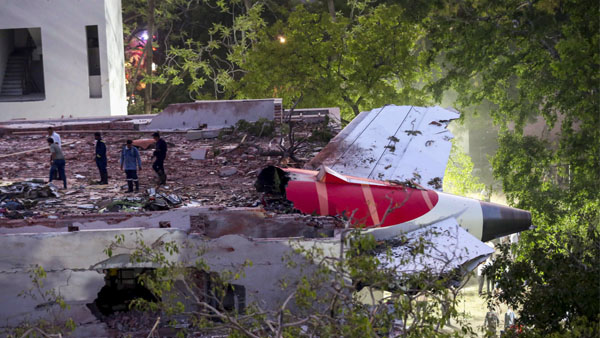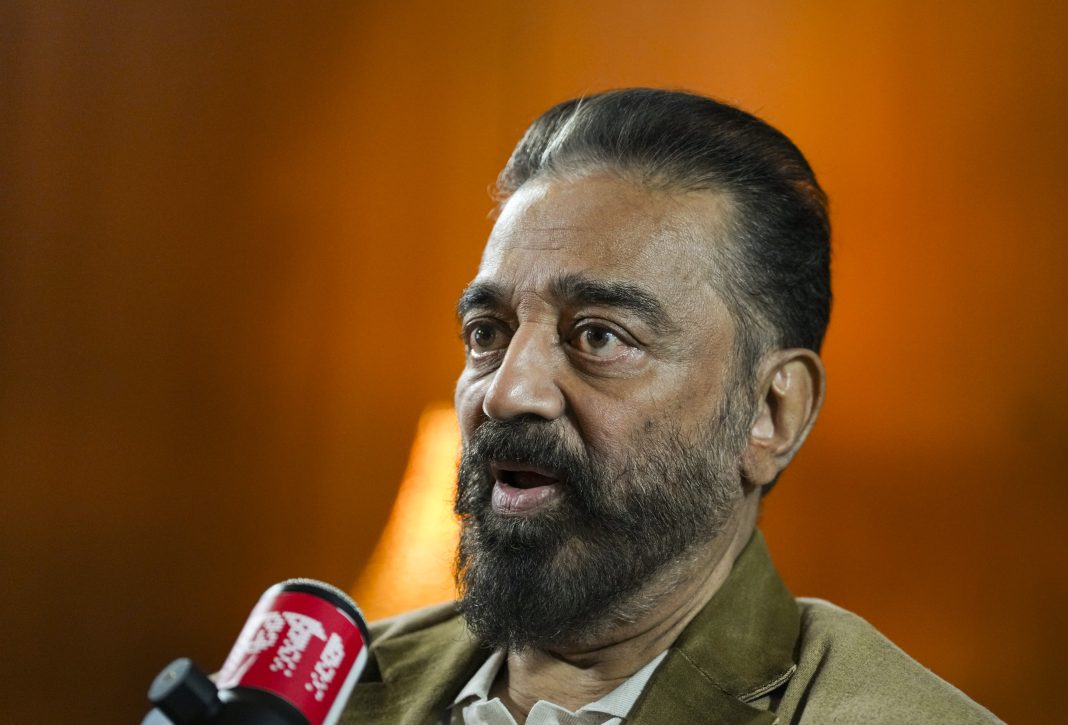By Dipak Kurmi
In a tragedy that has shaken the nation and left scars across continents, Air India Flight AI-171, bound from Ahmedabad to London’s Gatwick Airport, crashed shortly after takeoff on the afternoon of June 12, 2025. The Boeing 787-8 Dreamliner, a modern long-haul aircraft revered for its efficiency and safety, went down in flames just minutes into its journey, killing all 242 people on board. The incident, one of the deadliest aviation disasters in India in recent memory, has cast a long shadow over the aviation industry and plunged hundreds of families into unspeakable grief.
At approximately 1:38 pm local time, the Dreamliner, which had taken off from Sardar Vallabhbhai Patel International Airport in Ahmedabad, struggled to gain altitude and began an uncontrolled descent. According to the Directorate General of Civil Aviation (DGCA), the pilot, Captain Sumeet Sabharwal, a senior and experienced aviator, issued a “Mayday” call—a universally recognized distress signal used to indicate a life-threatening emergency—just seconds before the aircraft disappeared from radar. The last recorded signal from Flight AI-171 came when the aircraft was merely 625 feet above the ground.
A “Mayday” call, repeated three times for clarity—“Mayday, Mayday, Mayday”—is derived from the French phrase “m’aider,” meaning “help me.” It has been standard protocol in international aviation and maritime communication since the 1920s, reserved only for the most critical emergencies. Once such a call is made, all other radio traffic is cleared, allowing the distressed aircraft or vessel to relay its emergency situation, location, and coordinates to Air Traffic Control (ATC) and receive priority assistance. In this tragic case, the Mayday call was Captain Sabharwal’s final transmission.
Eyewitnesses on the ground reported a terrifying spectacle: the aircraft, moments after takeoff, failed to climb effectively and descended with a steep trajectory before erupting into a massive fireball. The jetliner, heavily fuelled for its long-haul intercontinental journey, exploded upon impact, magnifying the destruction. The crash site, located in the Meghani Nagar area—a densely populated residential neighbourhood—was soon engulfed in thick grey smoke as fire engines, ambulances, and disaster response teams rushed to the scene. Police cordoned off the area, and traffic was rerouted as the enormity of the catastrophe unfolded.
Among the 242 individuals aboard were 169 Indian nationals, 53 British citizens, one Canadian, and seven Portuguese nationals. One of the most prominent victims was senior Bharatiya Janata Party (BJP) leader and former Chief Minister of Gujarat, Vijay Rupani. At 68, Rupani was traveling to London to visit his family. His tragic demise has deeply shocked both the political fraternity and the people of Gujarat. “This is a big loss for the BJP. May his soul rest in peace,” said Union Minister CR Patil.
Rupani’s life journey mirrored the political evolution of Gujarat itself. Born in 1956 in Yangon, Myanmar, to a Jain Bania family, he was the seventh son of Mayaben and Ramniklal Rupani. Political unrest in Burma forced the family to migrate to Rajkot in 1960. He pursued studies in arts and law, gradually rising through the ranks of the Rashtriya Swayamsevak Sangh (RSS) and later the BJP. Starting his political journey as a corporator in the Rajkot Municipal Corporation in 1987, Rupani went on to serve as the Mayor of Rajkot, a Rajya Sabha MP, state cabinet minister, and eventually the Chief Minister of Gujarat from 2016 to 2021. His role in initiatives like the “Khushboo Gujarat Ki” tourism campaign remains etched in public memory. A quiet but influential presence, he was known for his RSS discipline and deep party loyalty.
Congress leader Jairam Ramesh, despite being on the opposite side of the political aisle, paid a heartfelt tribute: “He was extremely affable and the aggression in the House would very often be accompanied with a smile.” The parallels drawn between Rupani’s death and that of Balwantrai Mehta—another former Gujarat Chief Minister who perished in an air crash in 1965—highlight the tragic repetition of history.
Beyond politics, the human cost of this disaster has devastated families across India. Rajasthan bore a particularly heavy brunt, with 11 of its residents among the deceased. Entire families from Banswara, Udaipur, and Balotra were wiped out. Dr. Koni Vyas and Dr. Pradeep Joshi, a medical couple from Banswara, died along with their three young children—Pradyut, Miraya, and Nakul. The family had planned to relocate to London where Dr. Pradeep was already working. Their plans were tragically cut short just two days after Dr. Koni had bid an excited farewell to her former colleagues at Pacific Hospital in Udaipur.
In Balotra, young Khushboo Rajpurohit, newly married and traveling to London for the first time to join her husband, was another victim. Her father, who dropped her off at the airport the night before, received news of the crash while en route to Mehsana and rushed back to Ahmedabad in anguish. A video capturing her emotional goodbye at the airport now circulates widely—a haunting reminder of fleeting farewells.
From Udaipur, siblings Shubh and Shagun Modi, who had recently returned after completing MBAs and had joined their family’s marble business, were also among the casualties. The district administration and local business community have rallied around the grieving Modi family. Meanwhile, Bikaner’s political circles mourn the loss of Abhinav Padiyar, granddaughter of former MLA Kishna Ram Nai.
The crash site—tragically located near a medical college complex—witnessed scenes of horror and heartbreak. Emergency responders worked tirelessly to recover bodies, control the flames, and clear the debris. Air India CEO and Managing Director Campbell Wilson expressed “deep sorrow” in a video statement, calling it a “difficult day for all of us here in India.” He assured the public that the airline was working closely with authorities and had dispatched a team of “caregivers” to Ahmedabad to support affected families and ground personnel.
“While many questions remain,” Wilson said, “our focus is entirely on the needs of our passengers, crew members, their families, and loved ones.” The airline has pledged a full investigation in cooperation with the DGCA and international aviation safety bodies.
Aviation expert Sanjay Lazar noted that the aircraft’s failure to climb was “catastrophic.” According to early findings, the Dreamliner lost control at an altitude of just 825 feet. Being heavily laden with fuel, the resulting explosion was devastating. Speculation has already begun about possible causes: engine failure, software malfunction, bird strike, or technical errors in the fuel or thrust systems. However, definitive answers can only be derived after recovery of the black box and flight data recorders.
Public concern is growing over the safety protocols of Air India, especially in the wake of its recent expansion and fleet integration following its acquisition by the Tata Group. While the Boeing 787-8 Dreamliner is among the most advanced aircraft in the world, questions are now being raised about maintenance, crew training, and safety oversight. The global aviation community will closely watch the findings of the upcoming investigation, not just for accountability, but to prevent such catastrophes in the future.
In the days ahead, the nation will mourn its dead—leaders, professionals, students, newlyweds, and children. The pain is not confined to the crash site. It stretches across cities, villages, and international borders. This disaster has pierced the collective heart of India, serving as a grim reminder of how quickly lives can be extinguished mid-journey.
Flight AI-171 was meant to connect continents, reunite families, and carry dreams across oceans. Instead, it now symbolizes an irreplaceable loss. As the ashes settle and investigators pore over charred wreckage and cockpit recordings, the nation waits not just for answers—but for the strength to cope with this searing tragedy.
(the writer can be reached at dipakkurmiglpltd@gmail.com)




